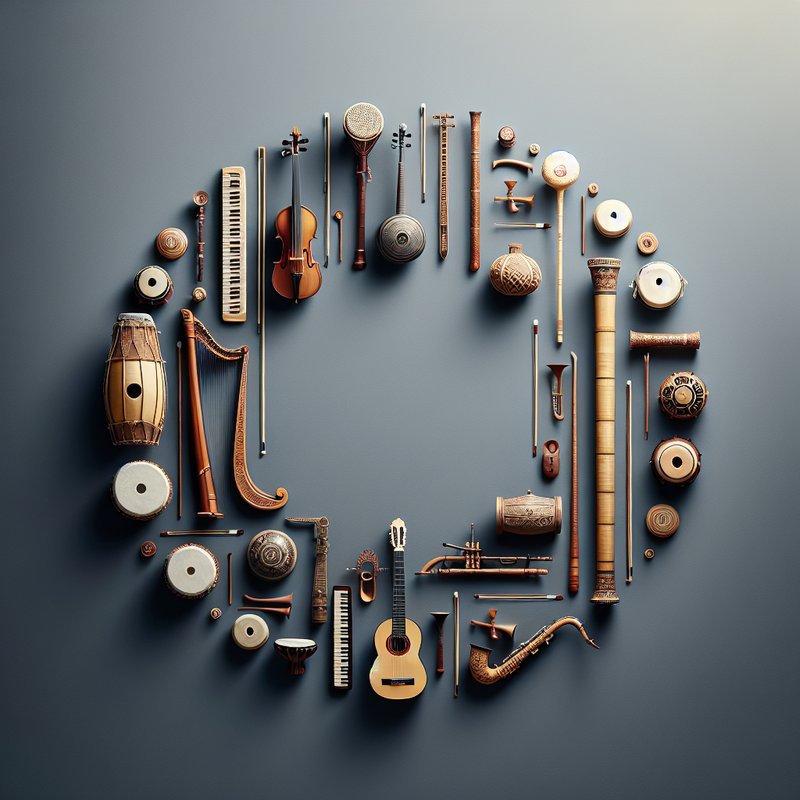Overview of Vietnam’s Traditional Music

Vietnam’s traditional music is a vibrant tapestry that reflects the diverse cultural landscape of the country. With influences from various ethnic groups, the music is characterized by its unique instruments and regional styles. Over centuries, Vietnamese traditional music has evolved by incorporating elements from both indigenous cultures and foreign influences such as China, India, and France. The fusion of these diverse elements has resulted in a rich and intricate musical heritage that continues to thrive in contemporary Vietnam.
Another fascinating aspect of Vietnam’s traditional music is its role in communal and religious activities. Traditional music often accompanies festivals, rituals, and ceremonies, serving as a way to uphold cultural values and pass down stories from generation to generation. This paragraph delves into the importance of music in Vietnamese social and spiritual life.
The Đàn Bầu: Vietnam’s Monochord Zither

The Đàn Bầu is one of the most iconic traditional instruments of Vietnam. Known for its distinct single-string and monochord design, the Đàn Bầu produces a hauntingly beautiful sound that is deeply evocative of Vietnamese cultural heritage. This paragraph describes the construction of the Đàn Bầu, including the materials used and the craftsmanship involved.
Playing the Đàn Bầu requires a high degree of skill and subtlety. Musicians use a variety of techniques to manipulate the pitch and tone, creating sounds that can mimic the human voice and convey a wide range of emotions. The player often uses their left hand to lightly touch the string while plucking it with a plectrum held in the right hand. This technique allows for the creation of overtones and harmonics, producing a rich and vibrant sound. The player can also change the tension of the string during the performance using a flexible rod, which adds another layer of expressiveness to the music. The emotional impact of the Đàn Bầu in performances is profound, as it can reflect the nuances of human emotions such as sorrow, joy, and longing, making it a deeply moving experience for listeners.
Despite its ancient origins, the Đàn Bầu remains relevant in contemporary Vietnamese music. Modern musicians are finding new ways to incorporate this traditional instrument into various genres, from folk music to modern compositions. This renaissance of the Đàn Bầu in today’s music scene showcases its versatility and timeless appeal. Contemporary artists are experimenting with the Đàn Bầu, blending its hauntingly beautiful sounds with modern beats and electronic music, creating a unique fusion that resonates with both traditionalists and new audiences. This modern adaptation not only preserves the cultural heritage of the Đàn Bầu but also breathes new life into Vietnam’s musical landscape, ensuring that this iconic instrument continues to enchant and inspire future generations.
The Đàn Tranh: The Vietnamese Zither

The Đàn Tranh, also known as the Vietnamese Zither, is another prominent traditional instrument. With its multiple strings and intricate design, the Đàn Tranh is celebrated for its melodic and harmonious sound. This paragraph provides an overview of the instrument, including its construction, tuning, and the cultural significance it holds in Vietnamese music.
The techniques for playing the Đàn Tranh are both delicate and complex. Musicians must pluck, strum, and sometimes bend the strings to produce the desired notes and effects. This paragraph elaborates on the various playing styles and techniques that make the Đàn Tranh a versatile and expressive instrument.
Like the Đàn Bầu, the Đàn Tranh is also experiencing a revival in contemporary music. Artists are blending traditional sounds with modern influences, creating a fusion that resonates with both old and new generations. Modern musicians are experimenting with new techniques and genres, integrating the Đàn Tranh into pop, jazz, and electronic music. This innovative approach not only brings the instrument to a wider audience but also ensures that the rich heritage of the Đàn Tranh remains relevant in today’s dynamic music scene. Collaborations between traditional Đàn Tranh players and contemporary artists are becoming increasingly popular, resulting in unique performances that celebrate the past while embracing the future. As a result, the Đàn Tranh has become a symbol of cultural continuity and creative evolution in Vietnamese music.
The Impact of Traditional Instruments on Vietnamese Culture

Traditional musical instruments are not just tools for creating music; they are integral to the cultural identity of Vietnam. These instruments carry the history, values, and stories of the Vietnamese people. This paragraph explores how traditional instruments are used in various cultural practices and ceremonies, emphasizing their role in preserving Vietnamese heritage.
The preservation of traditional musical instruments and their music is crucial in a rapidly modernizing world. Efforts are being made to pass down the knowledge of crafting and playing these instruments to younger generations. This paragraph highlights some of the initiatives and programs aimed at preserving Vietnam’s musical heritage.
In contemporary Vietnam, traditional musical instruments continue to inspire and influence modern art, music, and even education. These instruments serve as a bridge between the past and the present, providing a rich source of inspiration for artists and musicians. Contemporary artists often incorporate the sounds and aesthetics of traditional instruments into their works, creating pieces that honor the past while exploring new creative directions. In the realm of music, traditional instruments are being used in modern compositions, blending age-old sounds with modern genres to create unique and captivating performances. Furthermore, educational institutions are recognizing the value of these instruments in teaching cultural history and music, ensuring that young generations appreciate and carry forward Vietnam’s rich musical heritage. This enduring influence underscores the importance of preserving traditional instruments as vital elements of Vietnam’s cultural identity.

Leave a Reply